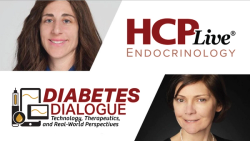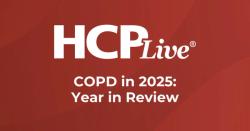
OR WAIT null SECS
David Lally, MD: Efficacy of Oral APX3330 for Diabetic Retinopathy
Presented at ASRS 2023, results from the phase 2 ZETA-1 trial showed oral APX3330 missed its primary endpoint, but the consideration of a binocular treatment effect may warrant further clinical development.
The primary trial endpoint of the phase 2 ZETA-1 trial was not met with APX3330 treatment in eyes with diabetic retinal diseases, as only 8% of study eyes showed ≥2-step diabetic retinopathy severity scale (DRSS) improvement, according to new findings.
However, the data, presented at the American Society of Retina Specialists (ASRS) 41st Annual Meeting, indicated APX3300, an oral, novel, small molecule inhibitor of Ref-1, did prevent ≥3-step worsening in binocular DRSS compared to placebo and could warrant further clinical development.
“In phase 2 trials, we are often learning about the drug's potential efficacy for the first time, as is the case with this trial and this novel mechanism of action,” presenting author David Lally, MD, Director of the Retina Research Institute at New England Retina Consultants, told HCPLive. “And sometimes other efficacy signals seen can redirect development plans into phase 3.”
The ZETA-1 trial is a multi-center, placebo-controlled, double-masked phase 2 trial, in which patients were randomized 1:1 to receive BID 600 mg APX3330 or placebo. Eligibility criteria for study eyes included moderate to severe nonproliferative DR or mild proliferative DR corresponding to reading center-confirmed DRSS scores of 47, 53, or 61; best-corrected visual acuity (BCVA) of ≥20/63; the absence of center-involved diabetic macular edema (DME); and no treatment for DR/DME within the past 6 months. The fellow eye criteria included any DRSS score and may have center-involved DME.
The study’s primary efficacy endpoint was the percentage of individuals with a ≥2-step improvement on the DRSS in the study eye compared to baseline at week 24. Secondary endpoints consisted of monocular and binocular ≥1, 2, 3, or 4 DRSS worsening or improvement, central subfield thickness (CST), BCVA, and assessments of safety.
A total of 103 individuals with DR were enrolled in ZETA-1, with an average age of 56 years. In the population, 90% had a baseline DRSS of 47 or 53, and the mean baseline CST in the study eye was 270 µm.
The analysis showed the primary endpoint was missed in each treatment group, but APX3330 showed a statistically significant binocular ≥3-step worsening after 24 weeks; data showed 16% of placebo subjects worsened compared to 0% of those treated with APX3300 (P = .04).
Individuals in the APX3330 group maintained their good vision compared to placebo. The analysis showed 19% of those in the placebo group lost ≥5 letters of BCVA, compared to only 5% of those in the APX3330 group (P = .07). Safety assessments indicated a favorable ocular and systemic safety profile of oral APX3330.
Well-established evidence indicates the progression of DRSS is associated with an increased risk for vision loss and reinforces the need for the prevention of DRSS worsening to reduce the complications of DR. The investigators suggest the efficacy and safety observed with APX3300 as an oral treatment warrants further clinical development.
“For diabetic retinal diseases, I think if you can find an oral medication that is incredibly safe and the number needed to treat is reasonable to see an effective preventing progression, then this type of medication could be very valuable for our patients,” Lally told HCPLive.
Relevant disclosures for Dr. Lally include Apellis Pharmaceuticals, Genentech, Iveric Bio, Ocuphire, Regeneron, and others.


